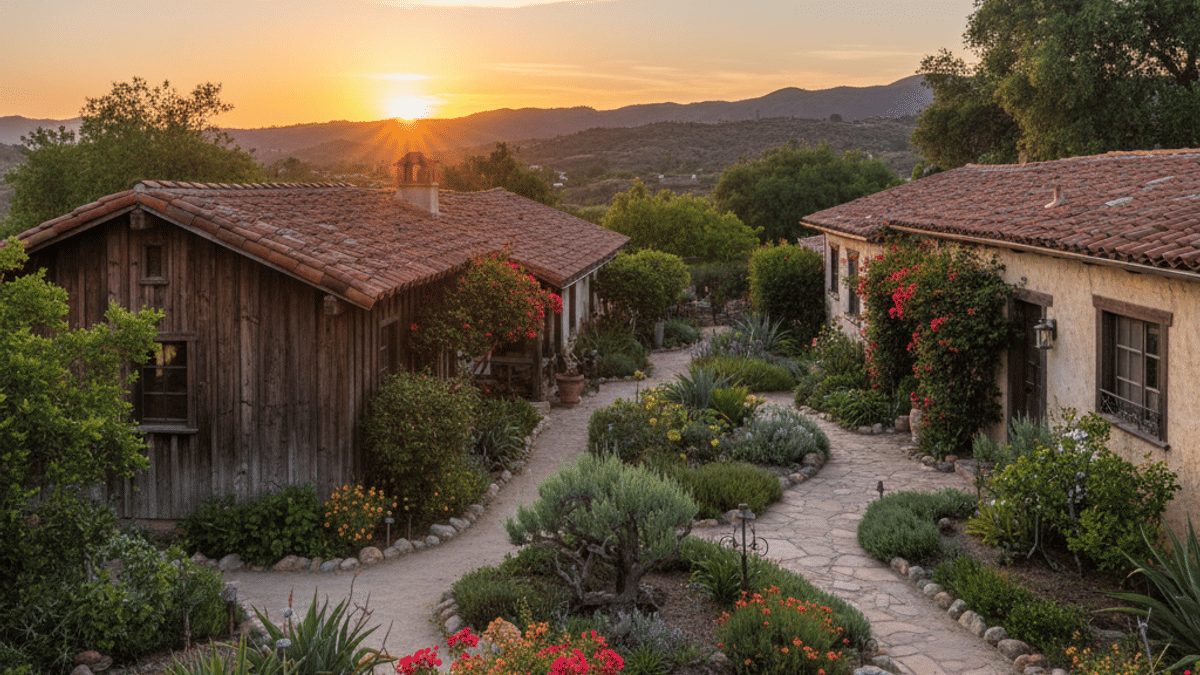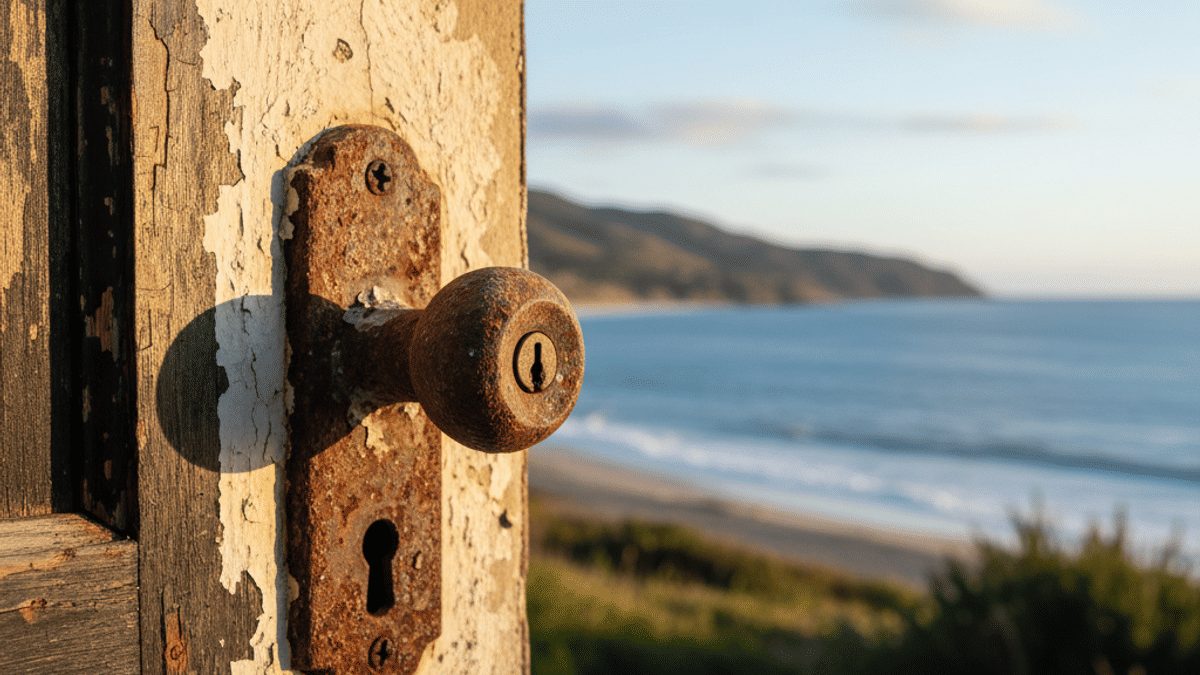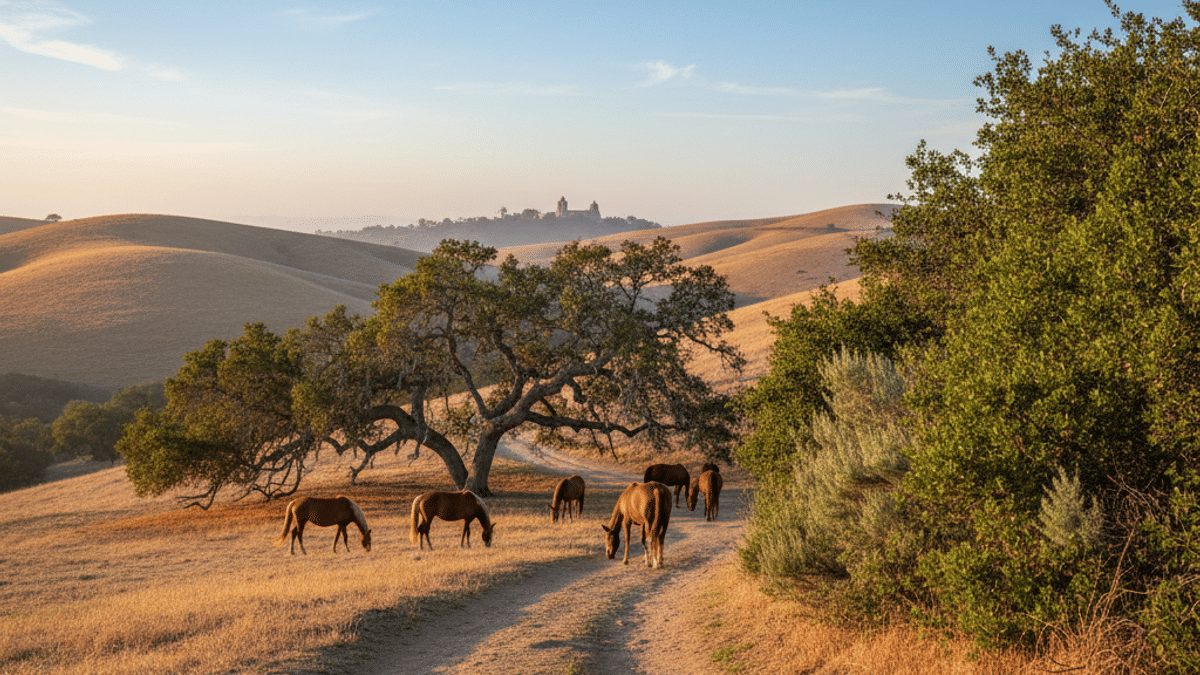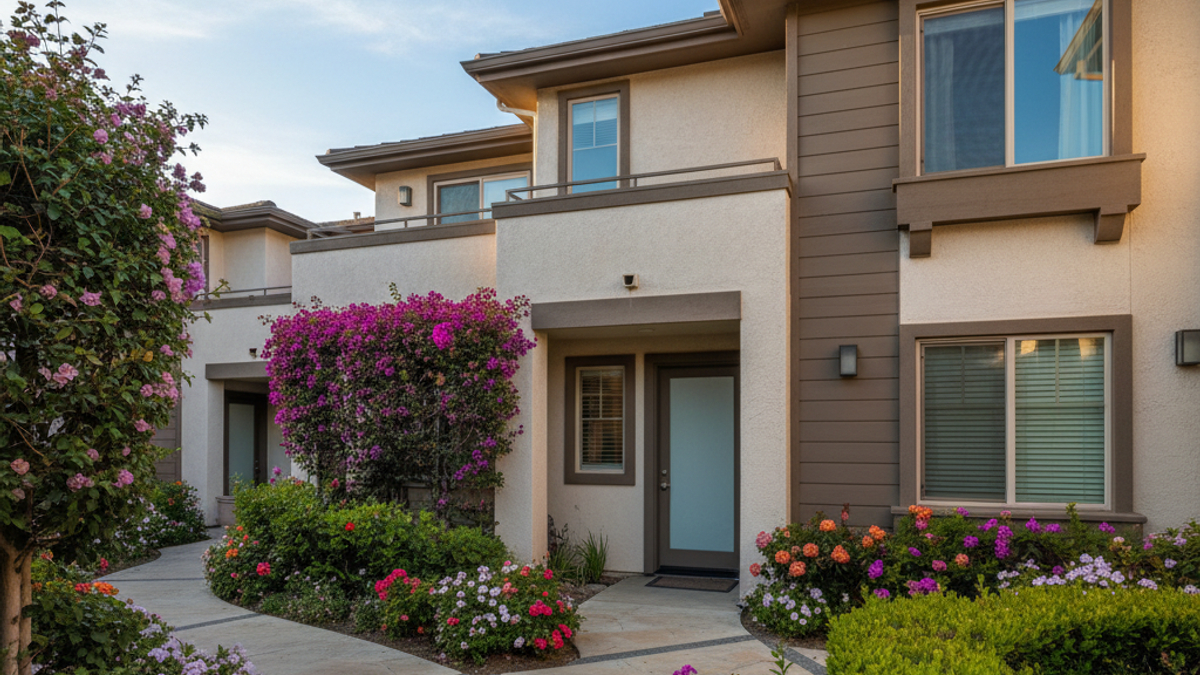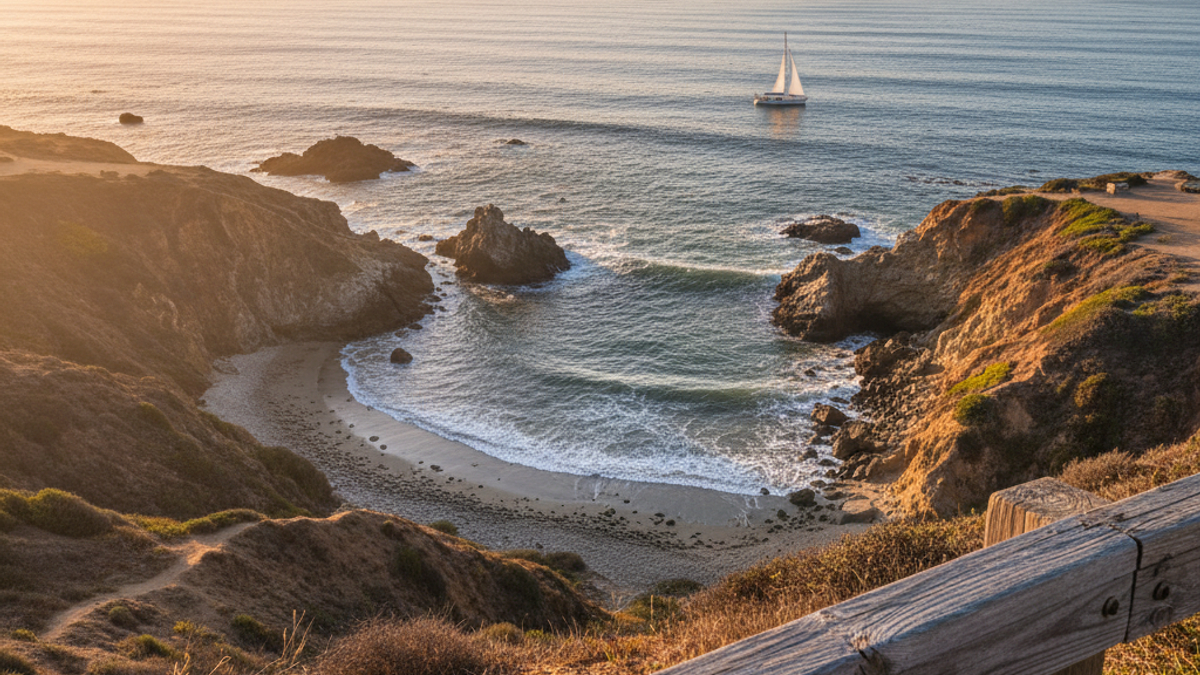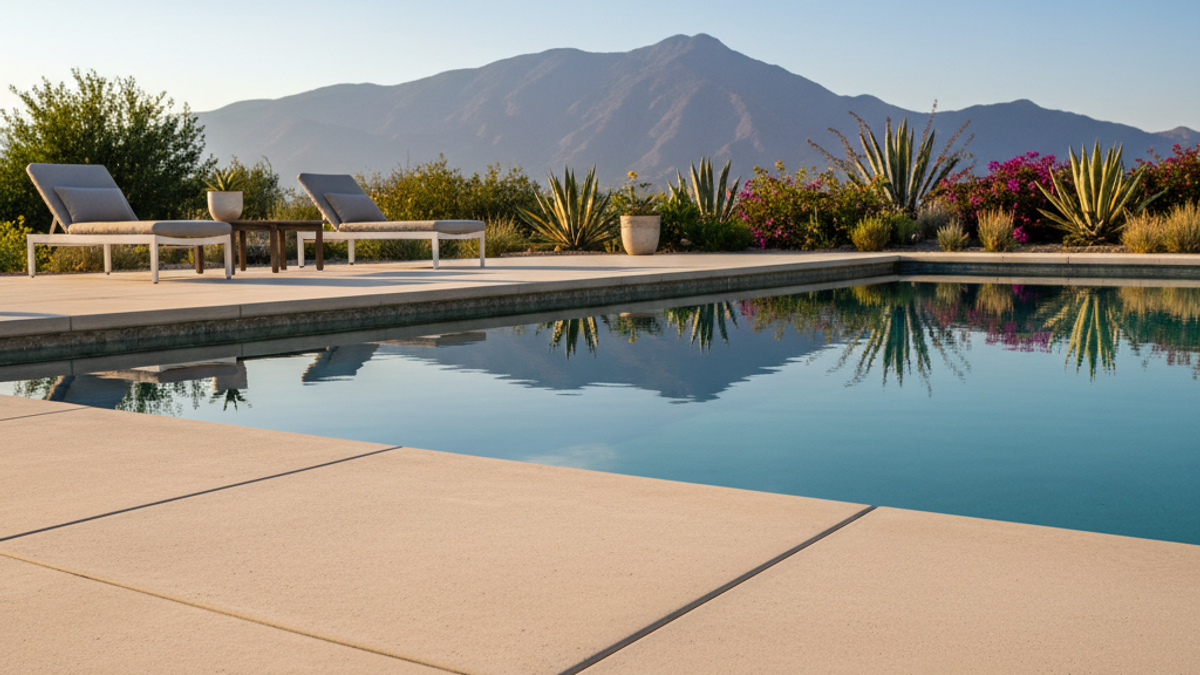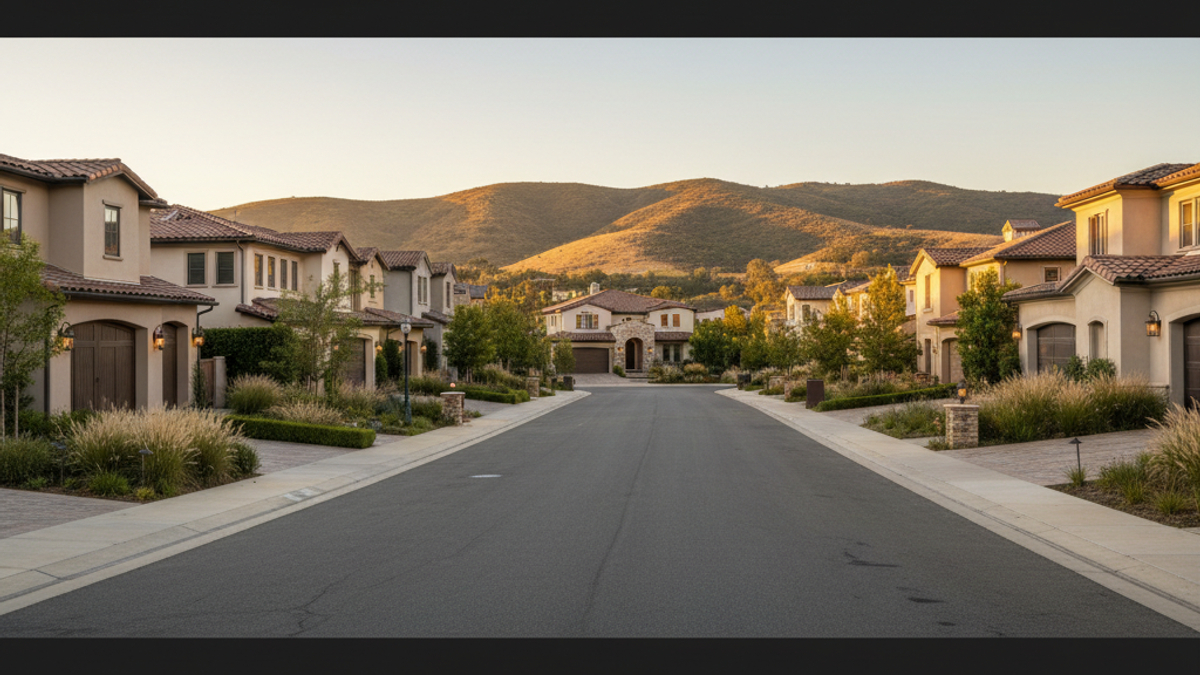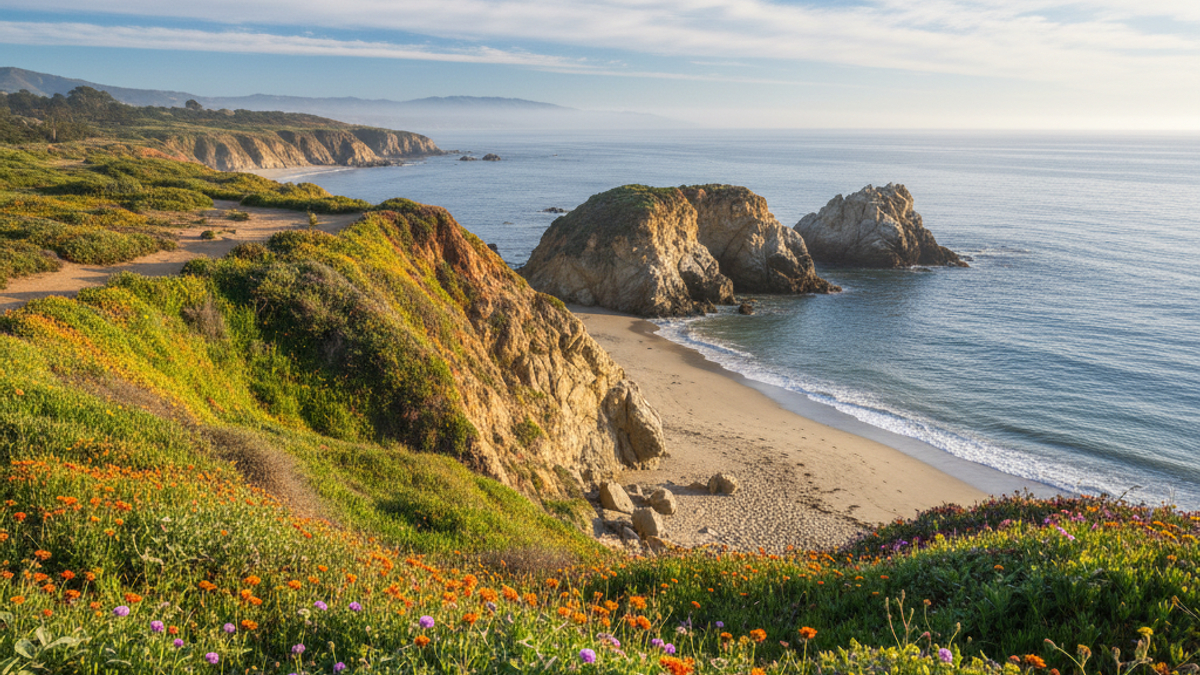So, what kind of place are we talking about?
Coto de Caza sits in the inland hills of south Orange County, seventy-some miles from downtown Los Angeles and a world away from strip-mall suburbia. Only two guarded gates let you in. Once past them, winding roads reveal oak groves, bridle trails, and custom estates that look borrowed from a lifestyle magazine. Roughly fifteen thousand residents share nine square miles of rolling topography. No big box stores, no hotel row, just private streets and a country club at the center of daily life. People who pick Coto do it for undisturbed quiet, trail access that starts at their back fence, and the bragging rights of living in one of the most secure master-planned communities in California. All of that exclusivity carries a price tag. Let’s crack it open line by line so you know what you are really paying for.
The real pocket-drainer: buying or renting a roof
Sticker shock warning. Median single-family sales in early 2025 hover around $2.35 million. That number bumps by two-hundred grand the moment you ask for a golf course view. Yes, condos and townhomes exist inside the gates, yet even the “entry level” plan with two bedrooms frequently trades at $950k.
Renters are not spared. Long-term leases on detached homes start just under $7,000 a month and can leap to $12k if the place has a pool and fresh remodel. Condos float between $4,200 and $5,000 monthly. You are also picking up:
- Homeowners association dues. Most tracts charge $275 to $425 per month. A few micro-neighborhoods tack on a second sub-association fee.
- Special districts. Coto keeps its own landscaping, patrol, and storm-drain zones. The annual assessment runs about $2,600 and slides neatly onto your property-tax bill.
- Upfront gate passes. Residents do not pay for their own transponders, but visitors need RFID tags after the first month. Expect $40 per car each year. No biggie but it is one more line item.
Utilities look ordinary on paper yet creep up because houses here are large. Eight thermostats, pool pumps, wine fridges, landscape lighting… little charges add up. Average combined electricity and natural-gas bills reported by owners land near $620 a month. Water rings in around $160 for a midsize lot, double that for an acre estate with thirsty turf. Fiber internet finally arrived in 2024, trimming prices to $80 for gig-speed if you lock into a two-year deal.
How does that stack against a nearby city like Mission Viejo? Think 30 percent higher on purchase price, 40 percent on rent, and 10 percent on utility outlay. Privacy costs money, simple as that.
Taxes: the numbers nobody loves but everybody should triple-check
California pulls personal income taxes on a progressive curve that tops out at 14.4 percent beginning this year. Nothing Coto-specific about that, though high earners feel it loud and clear. Property taxes are where local wrinkles show. The county base rate sits at 1.02 percent, yet add the Community Facilities District, the Coto general benefit charge, and bond-funded school projects and you are staring at an effective 1.23 to 1.28 percent. On that $2.35 million median purchase price, annual property taxes typically fall between $28,800 and $30,100 before exemptions.
Some residents opt to bundle assessments into an impound account with their lender to dodge a giant December check. Others drop the cash up front and ride lower monthly payments. Either way, taxes in Coto punch harder than in inland counties but sit roughly equal to Newport Coast and slightly below Laguna Beach, where special ocean-view districts spike the bill past 1.35 percent.
Do not forget sales tax. Orange County widened the rate to 8.75 percent. Coto has no retail inside the gates, so whenever you drive to Rancho Santa Margarita to grab groceries, that rate follows you.
Groceries, gadgets, and guilty-pleasure spending
Because there is no commercial core behind the gates, residents crowd three spots: RSM Town Center, Sendero Marketplace, and Ladera Ranch Plaza. Grocery cart math looks like this:
- Ralphs “standard” basket of 20 everyday goods: $112 last week.
- Gelson’s premium basket, identical items plus a few organic swaps: $137.
- Costco 15-minute drive away drops the same load to $92 but you buy in bulk.
Fresh produce prices swing with season and water allocations. For a family of four, budgets run $1,200 to $1,500 each month if most meals are cooked at home. Dining out leans pricey. The two-course lunch at the Coto de Caza Golf & Racquet Club costs $28 before tip. A drive to downtown San Juan Capistrano opens more casual options, yet even a Tuesday taco plate averages $18.
Entertainment? Coto residents tend to divide into three camps:
- Club devotees
Yearly social membership: $2,880 plus $180 monthly dues. Golf upgrade pushes initiation north of $30k and dues to $785 each month. - Outdoor wanderers
$0 if you use the community trail network. $305 a year for an OC Parks pass to widen your radius to Riley Wilderness and O’Neill. - Homebody hosts
Largest cost is disposable. Wine subscriptions, backyard movie screens, and catering for neighborhood poker nights. Easily $4,000 a year if you like to be the hangout house.
Local services come to you. Mobile pet groomers charge $95 per dog. Private swim lessons in your own pool reached $85 for 30 minutes by the end of last summer. Housekeepers? $185 for a standard four-bedroom cleaning every other week, up 12 percent from 2023.
Bottom line: your everyday tab will sit about 18 percent above the Orange County median if you keep spending habits unchanged. Lifestyle creep is real here because everyone else seems to spring for upgraded everything.
Getting around: gas, cars, and the lack of buses
Public buses stop outside the south gate. Nobody wants to schlep groceries half a mile along Coto de Caza Drive so nearly every household owns at least two cars. Regular unleaded in Rancho Santa Margarita averaged $5.89 a gallon in late March 2025. That is thirty cents more than the statewide mean. Part of the premium comes from convenience stations close to toll roads.
Daily commute mileage changed since remote work took over. Resident survey data from the master association shows 61 percent clock fewer than five in-office days per month. Even so, those scenic curves through the canyon will chew through fuel faster than flat freeway cruising. An average Coto commuter burns $260 in gasoline monthly. Add $11.11 in tolls each time you use the 241 Expressway.
Plenty of owners flipped to electric. Southern California Edison offers a home charging plan that drops your off-peak rate by 40 percent as long as your charger is Wi-Fi connected. The setup cost of a 240-volt line and wall unit floats around $2,200. If you drive 12,000 miles annually, the payback hits in under three years at current power prices.
Car insurance lives on the higher end. Gated roads do not lower premiums because accidents happen outside. Average full-coverage policy on a late-model SUV: $2,140 yearly, roughly $300 more than the statewide average.
Hidden fees newcomers never see on Zillow
Just when you think you captured every cost, Coto sneaks a few minor ones into the mix:
- Architectural review deposit. Want to repaint or add solar? Write a refundable $1,000 check to the architectural committee. Returned if you finish on time and follow the color chart.
- Equestrian center boarding. Yes, residents receive a slight discount yet still pay $1,000 to $1,400 monthly per horse, feed not included.
- Holiday lighting patrol. If your decorations stay up past January 15, the association fines $100 per notice.
- Quarterly fire-fuel reduction. Lot inspection costs nothing, but clearing eucalyptus and chaparral can run $700 per acre every spring.
Most buyers underestimate landscaping upkeep altogether. Slopes need biweekly cuts. Irrigation breaks after dry winters. Landscaping crews bill $280 per visit on estates over half an acre. Quickly becomes a four-figure monthly line unless you love yard work.
Is the premium worth it?
Depends what you chase. You are paying for privacy, 24-hour guarded entry, and a nearly zero-traffic neighborhood where kids still ride bikes on the street. You also pick up air so clear you can smell sagebrush after it rains. Yet convenience takes a back seat. The nearest urgent-care clinic sits fifteen minutes away. Airport runs chew an hour or more. If you buzz off that lifestyle tradeoff, the cost starts making sense. If you need coffee shops you can stroll to, you will question every dollar.
Fast answers for future residents
- What pushes the Cost of Living Coto de Caza above other suburbs?
Housing prices, association dues, and the pay-to-play country-club culture raise the bar. Basic groceries see only a mild bump, but big-ticket categories dominate the equation. - How does the total cost compare with the national average?
Numbeo data puts Coto roughly 106 percent above the US mean, with housing responsible for three-quarters of the gap. - Are there any budget-friendly entries for first-time buyers?
A handful of two-bedroom condos built in 1986 list under $900k. Competition is fierce because inventory stays under ten units most months. - What should a homeowner expect to pay in property taxes?
Nearly one and a quarter percent of assessed value, plus the separate community assessment that lands in the same bill. - Tricks for trimming utility costs?
Smart irrigation, solar panels, and time-of-use power plans together shave 15 to 20 percent. Also swap the ancient pool pump; newer variable-speed motors pay for themselves in one summer.
Ready to run the numbers on your own situation?
Pull your budget, tack on the figures above, and ask yourself how much quiet countryside is worth. If the spreadsheet still smiles back, Coto de Caza might be your next zip code. Questions or need a deeper cost breakdown tailored to your household size? Let’s talk.




